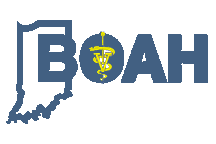Visitors, workers, transportation and rendering trucks can each threaten an operation's defense against disease. Likewise, on-farm use of such things as front-end buckets and skid-steer loaders for both manure removal and feed delivery can spread diseases such as salmonella, leptospirosis, cryptosporidiosis, and Johne's disease.
When visiting farms or planning a farm tour, personnel should contact the owner and discuss biosecurity expectations in terms of clothing, animal contact, showering, etc. These expectations can vary greatly from farm to farm and season to season. Even so, visitors should follow all biosecurity procedures.
As a herd manager it is important to consider the possibility of visitors, workers and traffic in and out of the operation from day to day. Herd managers should consider all of these biosecurity issues when planning a farm tour or when encountering visitors, announced or unannounced. The fundamental biosecurity expectations are as follows:
Clean outerwear not worn on another farm since cleaning.
Disposable plastic boots are preferred and should be supplied by the herd manager. Rubber boots are suitable but should be examined for cleanliness and approved by the herd manager/biosecurity advisor. If rubber boots are worn, they should be disinfected before entering the farm.
Foreign Travelers-Herd managers/biosecurity advisors should be notified if visitors have been traveling outside the United States in the past seven days. The risk and possible participation on the tour should be left up to the herd manager or biosecurity advisor.
Foods originating from animals should not be brought onto the premises unless authorized by the herd managers.
Establish a point of entry through which all visitors will enter. A sign can be posted to indicate boots need to be worn beyond this point.
Minimize actual animal contact.
Make provisions for hand washing if necessary. Consider providing alcohol-based hand rinses and cleansing gel to eliminate the need for soap and water.
Keep food and refreshments away from the actual livestock facility.
Provide a receptacle for discarding plastic boots prior to departing the premises.
Clean and disinfect truck and trailer used for transportation after each departure from the operation.
Provide feed trucks and rendering trucks easy access to the premises, but keep them as far from the animals as possible. Make it possible to pick-up at the outer edge of the premises and store feed away from the animals, if possible.
Wear separate boots and clothes when going to the market or visiting another farm. After returning to the operation shower and change clothes before coming in contact with the animals.
Change and disinfect boots when moving between different groups of animals.
Schedule workflow and traffic so contact is made with the youngest, highest health status animals first. Older and lower health status animals should be handled at the end of the day.
Perimeter fence or controlled entrance and exit (for people and animals).
